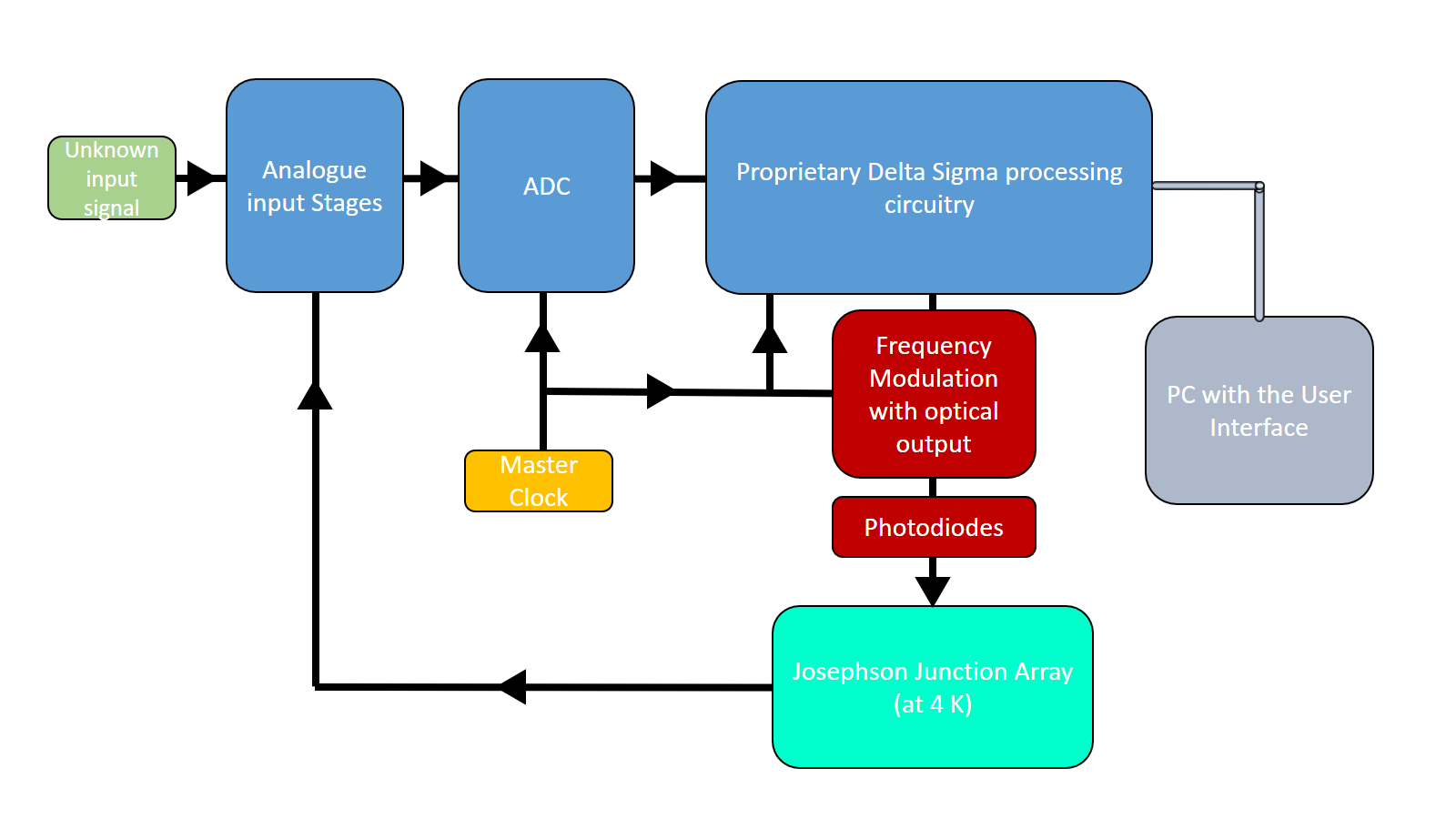Quantum accurate ADC
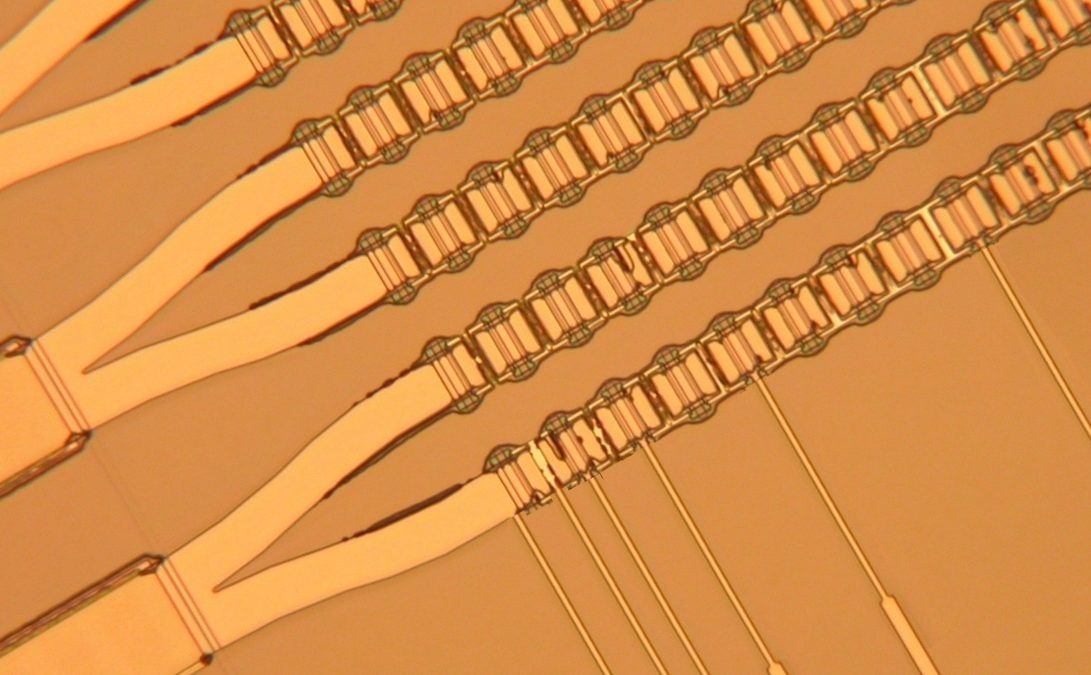
Applicos is participating in the European QuADC project, a Joined research project that aims to develop a digitizer linked to the Josephson effect, that is suitable for signals up to 1MHz. Linking the digitized voltage to the Josephson effect makes the accuracy independent from environmental conditions and time drift. Also there is no need for calibration. The targeted accuracies are: 10nV/V from DC to 1kHz, degrading to 10µV/V at 1MHz. Especially Metrology Institutes have a high interest in such ADC. Applicos was asked to participate in this project because of our expertise in High Accuracy Analog circuitries.
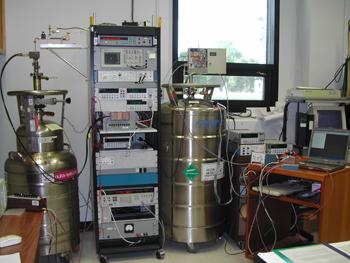
Background
At current only the RMS value of an AC signal can be linked to quantum standards. This is done by connecting the AC source to a resistor and measure the temperature rise of the resistor. Since resistance and temperature can be linked to quantum standards, the RMS value of the AC voltage can be linked as well.
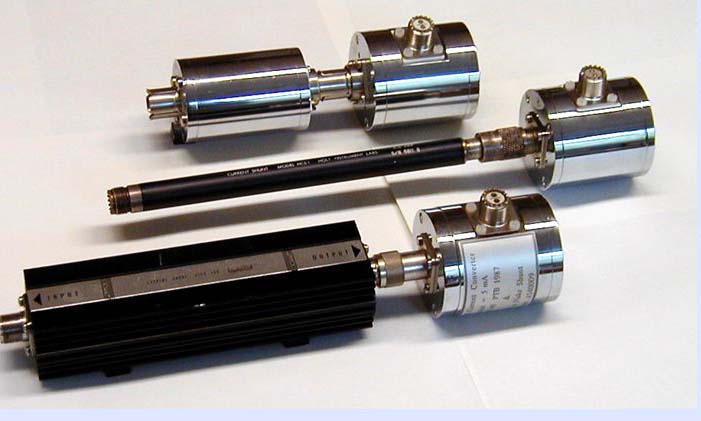
The limitations of this method are evident; the measurement takes very long, usually more than an hour, to achieve full accuracy, the source needs to be capable of driving the load resistor, and only the RMS value can be measured.
Josephson effect
The Josephson effect is a quantum effect that is used to produce a true voltage level, not being dependent on temperature, aging or other effects. It is achieved by sandwiching a thin layer of non-superconducting material between two layers of superconducting material. By applying a known frequency to such junction, a known voltage is produced. One of the difficulties of using the Josephson effect is that needs a temperature of approx. 4 K. Also one Josephson junction produces only tens of µVolts depending on the applied frequency, so large arrays are needed for usable levels.
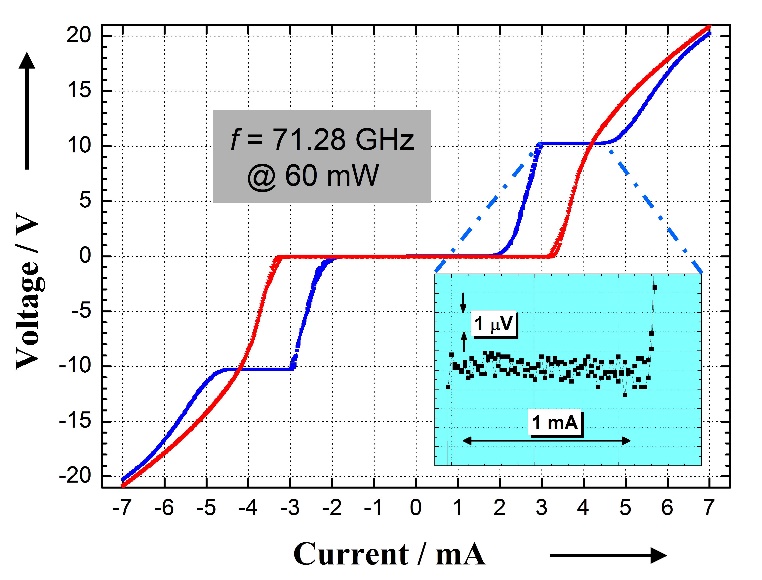
More information about the Josephson effect can found on:
https://en.wikipedia.org/wiki/Josephson_effect and https://en.wikipedia.org/wiki/Josephson_voltage_standard
Josephson based Generator
Recently a breakthrough has been achieved with a Josephson-effect based ARB which provided spectrally pure quantized AC-voltages exceeding for the usability threshold of 1 V RMS. More information about this project called Q-Wave can be found on: https://www.ptb.de/emrp/sib59-home.html
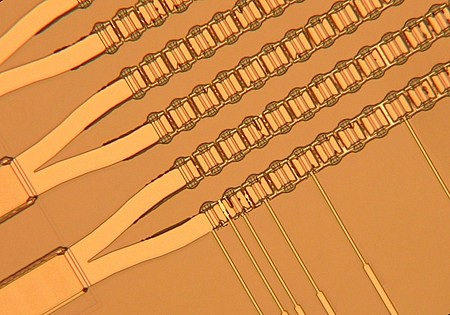
QuADC basic concept
The Quantum Accurate Digitizer will be built on the experience gained with the Q-Wave project and uses its quantum accurate output voltage as the reference for the unknown input signal. By designing a Delta Sigma converter with the Josephson Junction Array as DAC, the digitized input signal can approach the same accuracy as the Josephson Junction Array output.
